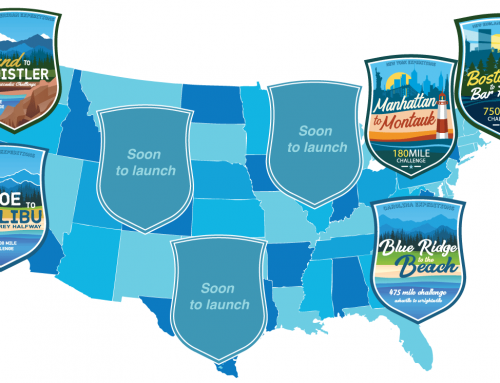By Evan Adler PT, DPT
Participating in a long distance race will test your limits of endurance, nutrition, sleep deprivation, and camaraderie. Preparation will demand a regimented training program including an incremental increase in weekly mileage of 10-15% per week to acclimate your body to the distance and aerobic capacity required. The relay poses new challenges to that plan. Whether running a total of 13 or 20 or 40 miles, you will be doing so in smaller increments with an hour or 4 in between each leg.
Relay Tip #1 | Incorporate 2-a-days into your training schedule.
During the last month of training, get your morning run done, enjoy your normal work day, then grab a clean set of gear and hit road again! Your body will need to get used to the quick turnaround between runs.
After you’ve put in the training, rented the van, and booked the beach house, the starting gun sounds and it’s time to start the slowest of all road trips. As each person does their leg, the rest of the team is left to bond in the van and drive ahead to the next checkpoint. While waiting for your teammate to arrive, you can utilize my next tip.
Relay Tip #2 | Walk around at the checkpoints.
The easiest way to stay loose and limber between runs is to get out of the van. Take advantage of the breaks: walk around, meet the other teams, talk to the local volunteers, and most importantly, get out of that stale van that smells like used running gear and peanut butter and banana sandwiches. The body was meant to move; if you keep yourself cooped up waiting for hours, your muscles will tighten and make running your next leg an even bigger challenge.
Then, when it’s 2:30 a.m. and you’ve just finished eight miles in the pitch black night where the only company was the creepy eyes staring at you from the cotton fields as your headlamp ignites their eye shine – what should you do?
Relay Tip #3 | Take the time to foam roll and/or stretch your hamstrings, quads, ITBand, and calves after each running leg.
Since there is no way you could sleep after that anyhow, this (and after each time you run) would be the best time to stretch and utilize your team’s foam roller. Your team did pack a foam roller, right? Following performance level activity is the optimal time to do static stretches to maintain muscle length. And the use of a foam roller or tennis ball can decrease the build-up of lactic acid and hydrogen ions that can accumulate and cause muscle soreness.
By taking advantage of these simple tips you can help prevent injuries before and during your event. You and your team can avoid the pitfalls and cross the finish line hand in hand in hand to enjoy all the spoils that go along with conquering such a massive race: the awesome post-race bash, the wonderfully ostentatious race medal, the breadth of newly born inside jokes, and that 200+ magnet for the car that let’s everyone know that you are one of the crazy ones.
# # #
Evan Adler is a Physical Therapist at Proaxis Therapy in Carrboro. He enjoys working with the endurance athletic community to help them reach their training goals and avoid injuries along the way. He is an avid runner and sometimes triathlete who has completed multiple marathons, a half ironman distance triathlon, and last year’s Tuna Run 200 with an ultra team.






